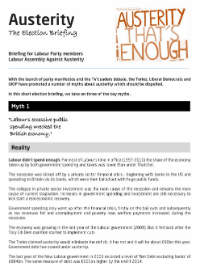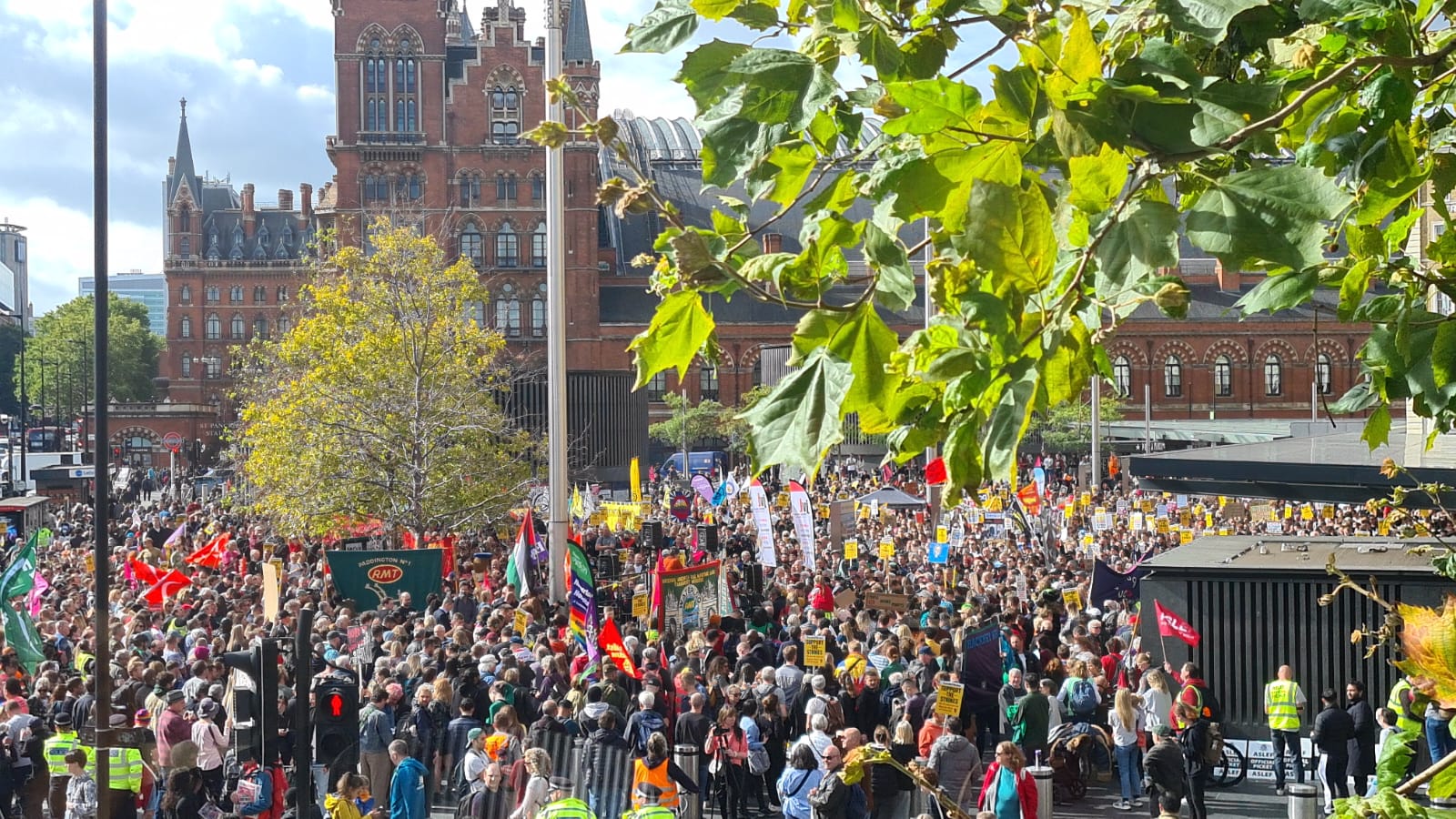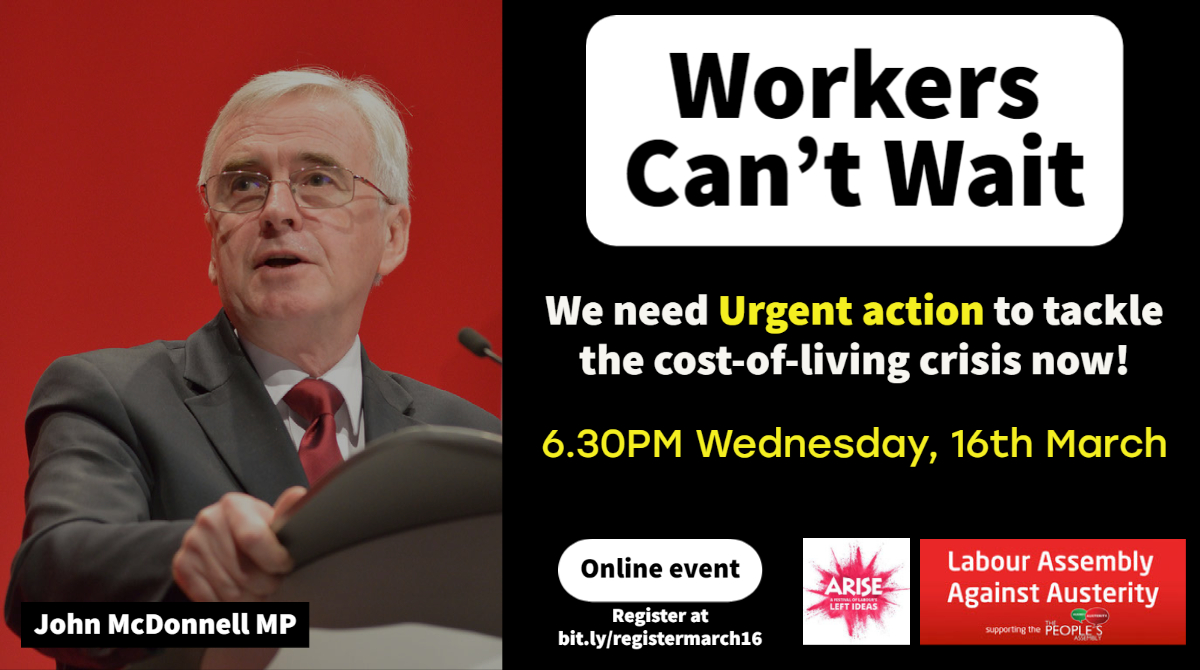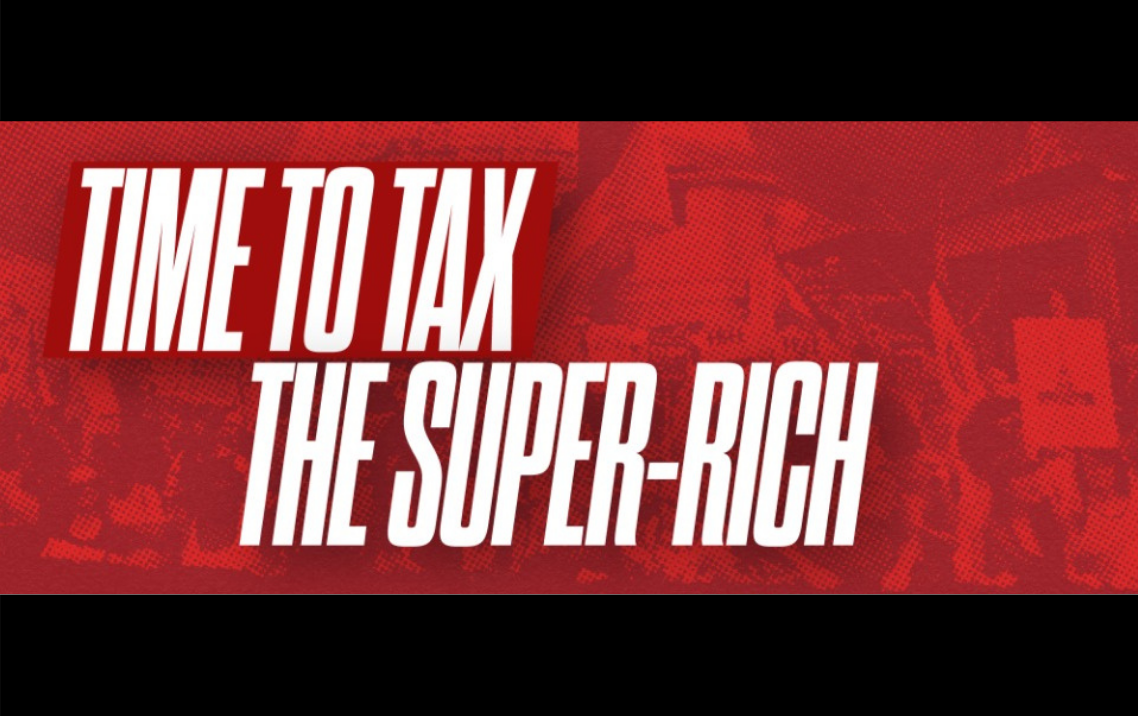 Austerity: The Election Briefing
Austerity: The Election Briefing
With the launch of party manifestos and the TV Leaders debate, the Tories, Liberal Democrats and UKIP have promoted a number of myths about austerity which should be dispelled.
In this short simple election briefing, we take on three of the key myths which may appear on the doorstep.
Myth 1
“Labour’s excessive public
spending wrecked the
British economy.”
Reality
Labour didn’t spend enough. For most of Labour’s time in office (1997-2010) the share of the economy taken up by both government spending and taxes was lower than under Thatcher.
The recession was kicked off by a private sector financial crisis – beginning with banks in the US and spreading to Britain via its banks, which were then bailed out with huge public funds.
The collapse in private sector investment was the main cause of the recession and remains the main cause of current stagnation. Increases in government spending and investment are still necessary to kick start a real economic recovery.
Government spending only went up after the financial crisis, firstly on the bail outs and subsequently as tax revenues fell and unemployment and poverty rose, welfare payments increased, during the recession.
The economy was growing in the last year of the Labour government (2009). But it fell back after the Tory Lib Dem coalition started to implement cuts.
The Tories claimed austerity would eliminate the deficit. It has not and it will be about £90bn this year. Government debt has soared under austerity.
The last year of the New Labour government in 2009 recorded a level of ‘Net Debt excluding banks’ of £884bn. The same measure of debt was £600bn higher by the end if 2014.
Myth 2
“There is no money left.
Austerity is necessary to
ensure prosperity in the future.”
Reality
There is money to invest. Investment could be increased by £50bn per year for 10 years to create high-paid jobs and restore public services.
Big business is sitting on a cash mountain of over £750bn. Bills – for food, fares, energy and rents are all rising. This means big companies increasingly have more of ordinary people’s money.
The Tory/Lib Dem austerity has created another unsustainable bubble, making a minority much better off: primarily landlords, bankers, the energy companies, the rail franchisees and so on.
With private investors refusing to invest (effectively on strike), public investment in key areas like housing, transport and hi-speed broadband is the only way to boost productivity and tax revenues.
Large infrastructure projects would provide an economic boost of nearly £3bn for every £1bn invested.
Myth 3
“Immigrants are a drain on
the economy and are
undercutting wages.”
Reality
Both claims are false. Levels of Immigration tend to be lower in poorer countries/cities and higher in richer ones. As New Zealand’s Prime Minister John Keys has said, “immigration is sign of economic success”.
Nearly all of the dozen countries where living standards are higher than Britain (they have a higher per capita GDP) they also have higher levels of immigration.
Immigrants make much lower use of benefits and public services because they overwhelmingly come to work. They are younger and better qualified than the average person. They are more likely to be working and paying tax.
There is no evidence that migrants increase or lower average wages. Real wages have fallen by 8% since 2008 mainly due to pay freezes.
Ending public the sector pay freeze (which after inflation has cut wages), introducing a living wage and greater trade union rights are the best way to protect all workers.v



0 Comments